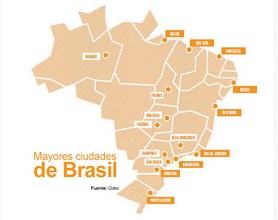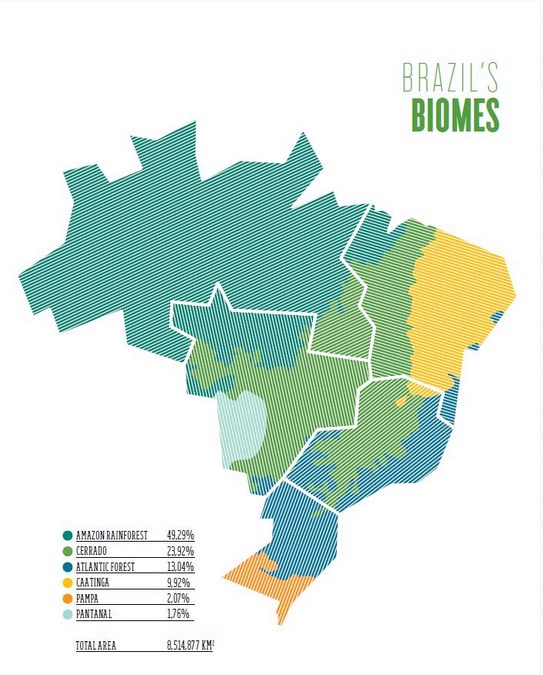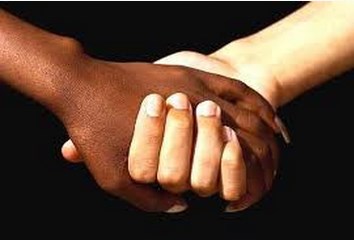The Federative Republic of Brazil is the largest economy in Latin America and one of the world’s largest engines of economic growth.
While any mention of Brazil often conjures images of soccer, samba and stunning tropical landscapes in the minds of foreign investors, there is a reason Brazil is forecast to become the fifth-largest economy on the planet by 2050.
Brazil is a highly diversified economy and one of the largest consumer markets in the world, with a highly productive agriculture sector, a broad and sophisticated industrial base, one of the most solid and prudently regulated financial sectors in the G20, the largest stock market in Latin America and has abundant natural resources, including energy.
What makes Brazil such a great place to do business is the sheer potential of internal growth in all sectors. As an emerging economy, Brazil faces structural challenges that are business opportunities in themselves.
The Brazilian government’s top priority is to ensure sustainable economic development and prosperity for all. Foreign investment in Brazil plays a crucial role in helping to achieve this objective, which is why Brazil is open for international business and among the most sought-after markets by foreign investors.
▸▸ Brazil was the 3rd-largest FDI recipient in 2012 and the top destination in Latin America.
▸▸ Profits of multinational companies operating in the region have grown five and a half times in just nine years, from $20.4 billion in 2002 to $113.1 billion in 2011. Brazil is open to foreign direct investment and continues to attract leading and innovative international businesses thanks to a secure investment framework and highly competitive economy.
▸▸ Brazil has one of the largest consumer markets in the world, with over 201 million inhabitants, and it is growing fast. It is due to become the fourth-largest economy in the world by 2050 according to PwC.
▸▸ 40 million new consumers have joined a burgeoning middle class since 2003, driving growth across a variety of sectors.
▸▸ Brazil is currently the world’s 2rd-largest market for beauty and healthcare products; 3rd-largest for PCs; 5th-largest for mobile phones, automobiles and TVs; and 5thlargest for medical equipment.
▸▸ The ‘B’ in BRICS – a global growth engine for today and tomorrow.
▸▸ Brazil is home to a competitive industrial sector. A series of market reforms, including steadily declining interest rates, lower electricity costs, improved access to financing, a reduced tax burden on companies and reduced logistics costs through unprecedented infrastructure investment programs have strengthened industry.
▸▸ Brazil is home to Latin America’s largest aerospace, automotive, oil and gas, mining, capital goods, medical equipment and chemical industries.
▸▸ Relevant player in research, development and innovation.
▸▸ $15 billion in credit and grants to support innovative projects by companies will be invested by 2014 under the Inova Empresa program.
▸▸ Science Without Borders program is bound to send 100,000 of the best and brightest Brazilian students overseas to pursue graduate studies and research projects at the world’s best universities to bring new talent to Brazil when they return.
▸▸ The vast majority of the population falls within the economically active range, with a positive demographic trend until at least 2020.
▸▸ Young, dynamic workforce is supported by public and private professional training programs that can be implemented in partnership with businesses.
Brazil is making unprecedented investments in infrastructure under the Logistics Investment Program.
▸▸ The pipeline of investment projects includes 10,000km of new railways, 7,500km of highways to be widened and extended, development of 270 regional airports, new urban mobility projects for Brazil’s medium and large cities, new, efficient and integrated ports, the development of 4 international airports, new electricity transmission lines and hydroelectric power plants.
▸▸ The new projects will reduce costs for business and generate related business activities in the transportation and logistics segment.
▸▸ Brazil’s largest cities are consolidating their position as investment headquarters not only for Brazil, but also for the entire Latin American region.
▸▸ Brazil is a member of the South American Common Market (Mercosur) and is connected to all countries in South America by free trade agreements. A brief description of Brazil in Mercosur is described here
History Timeline

Territory
Brazil is the fifth-largest country in the world by total area and occupies almost half of the entire South American continent

▸▸ Size: 8,514,876.6 km2
▸▸ Land border: 15,735 km
▸▸ Coastline: 7,367 km
▸▸ Arable land: 388 million hectares
▸▸ The heart of South America:
Brazil occupies almost half of the South American continent and shares land borders with Argentina, Bolivia, Colombia, Guyana, Paraguay, Peru, Suriname, Uruguay and Venezuela as well as the French Overseas Region of French Guiana.
▸▸ Most of the Amazon Rainforest is located within Brazil’s borders
▸▸ Administrative divisions:
Brazil is divided into 26 states and a Federal District, which have their own directly elected governments and independent administrations.
▸▸ They are grouped into 5 regions:
»» Midwest (agricultural heartlands of the country’s cerrado biome)
This region, covered with extensive savannah and tropical grasslands (cerrado), is still sparsely populated. Once one of the more isolated areas of the country, this region has experienced a rapid expansion of its rural production and established new industries. The national capital, Brasília, founded in 1960, was moved to this region when the then President Juscelino Kubitschek made the decision to move the capital of Brazil to the heart of the country as part of a national economic development plan. Goiânia is the second-largest city in the Midwest. A planned city like Brasília, Goiânia and its surrounding hinterland is an area traditionally dominated by agribusiness, but recent industrial projects are opening up the region to new activities, including automotive manufacturing.
»» North (mainly the Amazon Basin)
This region lies mostly within the Amazon basin and the territory is dominated by rainforest and numerous tributaries of the Amazon River. By volume, this area holds the largest concentration of freshwater in the world and one-fifth of the planet’s freshwater reserves. The two largest cities in the region are Manaus, capital of the state of Amazonas and an important manufacturing cluster as Brazil’s largest Free Trade Zone, and Belém, capital of the state of Pará, which has an important maritime port. The Amazon is an important trade corridor, with a lot of goods shipped by barge between Manaus and Belém for onward shipment to the Brazilian domestic and international export markets. The state of Pará is an important mining center, home to the Carajás Iron Ore Mine, the largest iron ore mine in the world.
»» Northeast (encompasses a large part of the arid caatinga biome)
One of the fast-growing regional economies in Brazil, the Northeast is situated in an area that encompasses both the arid caatinga and the semi-arid cerrado biomes. Vast stretches of this region, which contains nearly 30% of the Brazilian population, are subject to frequent drought.
Industrial development is an important and fast-growing sector in the region. Salvador, the largest city in the region and the capital of the state of Bahia, has an important manufacturing cluster, while Recife, the second-largest metropolitan area in the region and capital of the state of Pernambuco, is home to the Suape Industrial Complex and the Recife Digital Port, an ICT innovation hub. Sizable oil fields and mineral deposits are located in the region, and in recent years the Federal Government (through the Superintendency for the Development of the Northeast – SUDENE) has been giving the Northeast special attention. Significant resources have been allocated to its improvement, with considerable success. Pernambuco and Bahia were the first major centers of colonial Brazil and they still exert a very strong influence on Brazilian culture. Much of what is characteristically Brazilian in music, folklore and cuisine originated in this region. Both Ceará and Maranhão ports of Pecém and Itaqui are important hubs for agricultural and iron ore exports.
»» South (includes the Brazilian pampas and part of the Atlantic Rainforest)
The South of Brazil is an area shaped by European immigration, particularly from Germany, Italy and Eastern Europe. Traditions from the Old Continent – and its languages – are still preserved in the culture of Southern Brazil. The South has among the highest levels of infrastructure, human development and economic diversity rates in Brazil. Towards the very south, in the state of Rio Grande do Sul, the highland plateaus sweep down to wide plains called the pampas, home to gaucho culture. The largest city in the region is Porto Alegre, the capital of Rio Grande do Sul.
»» Southeast (the Atlantic Rainforest and some of the semi-arid cerrado biome)
The Southeast is Brazil’s industrial heartland, most densely populated region and has the largest economy among Brazil’s regions, with a diversified production base that includes industrial manufacturing, agriculture and services. The state of São Paulo accounts for 33% of Brazil’s total GDP. The largest cities in the region are São Paulo (the largest city in the southern hemisphere and Latin America’s largest financial center), Rio de Janeiro (the host city for the 2016 Olympic Games)
People and Demographics
Brazil’s population includes a combination of people with indigenous, European, African and Asian roots, and their diverse origins are reflected in the national culture. Food, music, crafts, architecture and popular feasts create a mixture of cultural values that extend beyond the country’s borders.
Brazil’s biggest asset is the Brazilian people, made up of various cultures living in harmony.
Population Facts and Figures:
▸▸ Brazil is the 5th-largest country in the world by population.
▸▸ Demographic Dividend: Brazil’s population is highly concentrated in the working-age range
▸▸ 40 million Brazilians have entered the middle class since 2002
▸▸ 22 million Brazilians have been lifted out of extreme poverty since 2011
▸▸ Total population: 201.032.714 million (2010 Census)
▸▸ Population living in urban areas: 84% of total
▸▸ Language: Portuguese
▸▸ Population distribution per Region:
Southeast (42.1%), Northeast (27.8%), South (14.4%), North (8.3%) and Midwest (7.4%)
▸▸ Ethnicity: white 48.2%, mixed ancestry 44.2%, black 6.9%, Asian 0.7%, indigenous peoples of Brazil 0.7%
▸▸ Religion: No State religion exists in Brazil; the Constitution guarantees freedom of belief and expression. Most of the population is Christian (64.6% Roman Catholic and 22.2% Protestant). 8% declares themselves to have no religion, while 2% are Spiritist.
According to IBGE’s last census in 2010, the major capital cities of Brazil, its states and respective population are:
Climate
Most of Brazil lies in a tropical climate zone, except for the South, which is situated in a temperate zone. In general terms, temperatures in the country tend to vary between highs of 30oC (86oF) and lows of 15oC (59oF), depending on the season.
As a southern hemisphere country, Brazil’s summer runs from November through February, and winter from June through September. Temperatures in the South and Southeast of the country can reach freezing during the southern hemisphere winter, particularly at higher elevations. The North, on the other hand, tends to remain hot and humid throughout the year. The Midwest of the country and the Northeast have essentially two seasons: a dry season (roughly June through September) and a rainy season (October through May). The country is relatively free from natural disasters, although heavy rainstorms have been known to cause occasional flooding and landslides in mountainous areas.
Environment
Brazil is the country with the highest biodiversity in the world, housing about 20 percent of all species on the planet.
There are six main biomes in Brazil. Almost the entire North Region is covered by the Amazon Rainforest. The central part of the country is tropical savannah and scrub called cerrado. The Northeast encompasses a dry outback called caatinga and also a large cerrado area. The Southeast coast and most of the South are covered by the Atlantic Rainforest. In addition, there are two smaller biomes: the Pantanal Wetlands near the border with Bolivia and the Pampas in the far south on the border with Argentina and Uruguay.

The Brazilian commitment to sustainable development is directly linked to tackling climate change and conserving the country’s forests and biodiversity. Since December 2009, Brazil adopted progressive legislation in this area that includes a voluntary pledge to cut greenhouse gas emissions by 36.1percent – 38.9 percent compared with the business-as-usual (BAU) scenario by 2020. In this regard, the National Climate Change Policy establishes the need for developing sector plans with specific targets for reducing emissions in the industry, agriculture and energy sectors, land use change and other areas.
An The Action Plan for Prevention and Control of the Legal Amazon Deforestation (PPCDAM) was launched in 2004. It comprises over 200 initiatives involving territorial planning in forest areas, including land tenure, monitoring and inspection and the promotion of sustainable and productive forest management.
The program entered into its third phase in 2012 and has contributed to a drop of nearly 77 percent in deforestation rates as measured by the National Institute for Space Research (INPE), the creation of 25 million hectares of conservation units in the Amazon region, the ratification of 10 million hectares of indigenous lands and the approval of new rules for the sustainable use of public forests.

The creation and enforcement of protected areas has been an efficient tool in reducing emissions from deforestation and protecting biodiversity in Brazil. Over the last decade, Brazil led the designation of protected areas worldwide. According to the United Nations Environment Program’s Global Biodiversity Outlook 3, nearly 75 percent of protected areas created around the world since 2003 (700,000 square kilometers) are located in Brazil. At least 81 percent of the original Amazon forest are preserved.
In 2006, terrestrial protected areas covered 8 percent of the national territory, increasing to 17.33 percent of the continental area and 1.53 percent of the marine area in 2010. The Amazon Region Protected Areas (ARPA) program – the world’s largest tropical forest conservation initiative – was launched in 2002, involving the government, World Wildlife Fund and other concerned parties. ARPA is an ambitious 12-year effort to ensure the comprehensive protection of at least 500,000 km2 of lands in the Brazilian Amazon.
Culture
Brazil is a country of racial, cultural, religious and social tolerance. This peaceful coexistence of different cultures encourages original, popular cultural manifestations. The integration of distinct cultures explains the richness and diversity in cuisine, music, handicraft, art productions and popular celebrations. Additionally, the joyful and warm-hearted spirit of Brazilian people adds to their hospitality and openness to what´s new.
Diversity also sets the tone for Brazil’s rich architectural heritage, which ranges from structures in the colonial baroque style to the architectural modernism of the federal capital, Brasília.
Immigration was of extreme importance in the formation of the national culture. Brazilians have incorporated different elements from a multitude of global cultures during the past five centuries since the Portuguese arrived in Brazil in 1500. In addition to the contributions of native Indians, Africans and Portuguese settlers, the significant arrival of immigrants from all parts of Europe, the Middle East and Asia has influenced the formation of a national identity.
Today, there are over six million immigrants, with the predominance of Europeans and Asians, in particular Italians, Germans, Spaniards, Syrians, Lebanese, Japanese, Chinese, and Korean. This strong interaction among cultures characterizes the Brazilian people: deeply mixed, joyful, affective, open to novelties and very welcoming.
Despite Brazil’s large territory, the same language is spoken throughout all regions. Portuguese is the fifth most spoken language in the world and the third among Western languages after English and Spanish.


